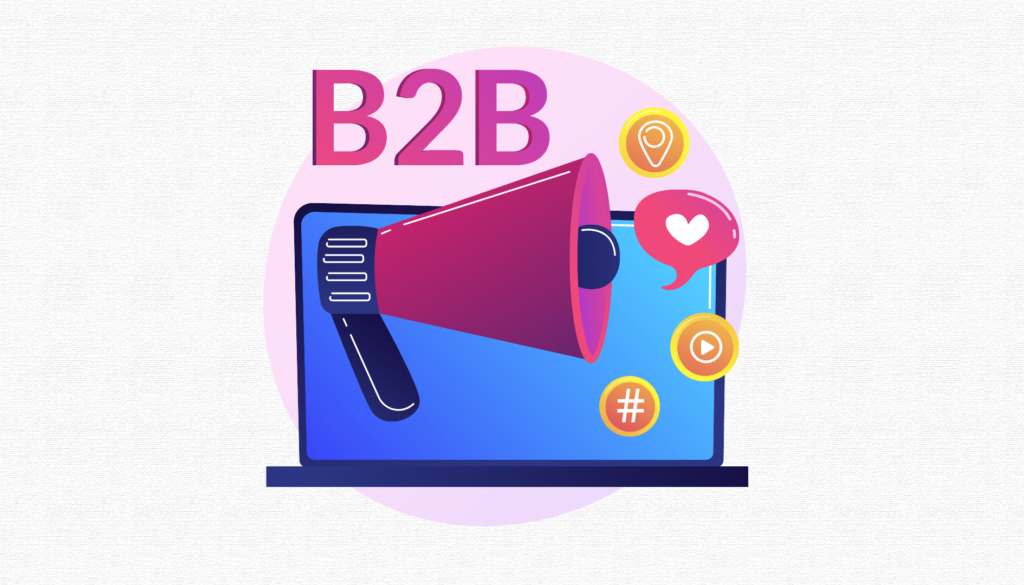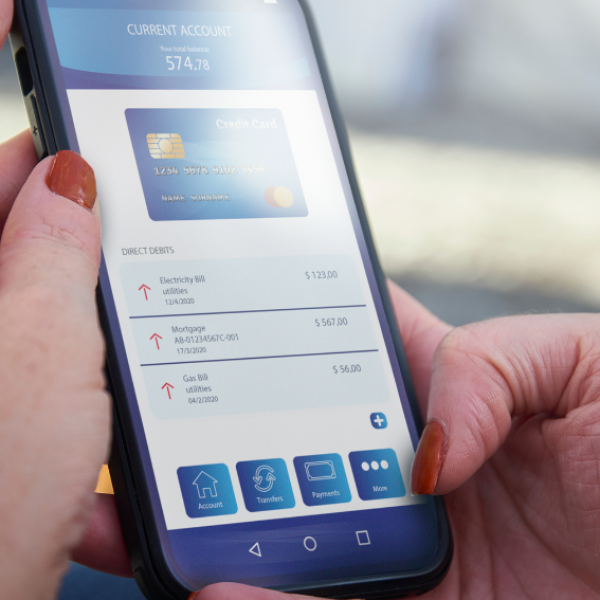Are you looking to boost your B2B sales management performance and improve your territory management strategies? Companies adopting effective B2B sales territory management strategies often see significant revenue and increased customer satisfaction. Learning and applying these practices in today’s competitive business environment is vital.
This article will explore crucial principles that can transform your approach and contribute to success and growth in the B2B sales sector.
Join us to discover the benefits of successful B2B marketing automation! We are ready to equip you with the necessary knowledge and skills to manage your market and achieve sustainable success effectively. Let’s start this journey together and explore key strategies for effective business-to-business marketing.
In This Article
ToggleWhat Exactly Is B2B Sales?

B2B (Business-to-Business) sales involve selling products or services directly to other businesses or organizations. These sales often demand more customization and a thorough understanding of each customer’s business needs. B2B sales are increasingly crucial as companies strive to build long-term relationships with other relevant entities.
Due to the need for multiple approvals within businesses, closing a B2B sale typically involves several steps. This process often involves comprehensive interactions, presentations, product demonstrations, and negotiations with key decision-makers, resulting in an extended sales cycle. Examples of B2B sales include a software company selling its products to a large corporation or a consulting firm offering services to a government agency.
How Is It Different From B2C Sales?
B2B sales involve selling products or services to other businesses, whereas B2C sales focus on selling to individual consumers. The primary distinction lies in the target sector. B2B sales usually feature more complex products or services and extended sales cycles. This is because businesses often proceed cautiously, requiring substantial information before purchasing.
Conversely, B2C sales generally involve more straightforward products or services and shorter sales cycles, as individual consumers are more likely to buy based on personal preference and convenience. Furthermore, B2B transactions typically have higher values than the smaller transaction sizes standard in B2C sales.
Understanding the B2B Sales Process

The B2B sales process typically involves eight essential steps, applicable in both inside and outside sales scenarios:
- Market Research
Before initiating sales, you must analyze your target market, competitors, and buyer profiles. This step ensures that your products or services and their value proposition are well-suited to market demands.
- Locating Potential Customers
It’s important to identify key decision-makers and secure qualified leads with the need, interest, and budget for your offerings.
For most businesses operating in the B2B sector, LinkedIn is the prime platform for customer acquisition. This social network facilitates easy access to leads’ recent activities, providing insights into their business challenges. Additionally, visiting the websites of potential customers can yield valuable information for use in sales engagements.
- Initiating Contact
Once you’ve assessed the market, competitors, and target demographic, the next phase involves outreach to foster beneficial business relationships. This may include both inbound and outbound marketing techniques. Preparing thoroughly by understanding your prospects’ needs and problems is critical before making contact.
- Presenting to Leads
With preparatory work completed, it’s time to present your value proposition to potential clients directly through a phone call or LinkedIn InMail.
This involves demonstrating how your products or services address the needs of your prospects while positioning yourself as an expert within the industry. It is recommended that you tailor your pitch to match the specific characteristics of your buyer persona and provide a customized experience.
- Follow-up
Immediate conversions after the first pitch is uncommon; typically, follow-ups are essential to close deals. In the business-to-business sector, these follow-ups often include verifying if prospects need more information about the offer and re-engaging with leads who have shown interest in continuing discussions after some days have passed.
- Completing the Sale
After successfully persuading prospects about the merits of your offerings, the final step is to secure their agreement on the proposal or contract. While typically straightforward, this stage marks the culmination of the B2B sales cycle.
What Are the Critical Activities in B2B Sales Management During the Sales Process?
In B2B sales, identifying potential customers, engaging with them effectively, and securing deals are essential for success. The specific activities involved can vary by industry and business type. Here are several key steps commonly found in B2B sales:
- Outreach: It’s critical to maintain consistent communication with potential clients through multiple channels, including phone calls, texts, emails, in-person meetings at conferences, and digital networking platforms such as LinkedIn. The choice of communication methods typically reflects the client’s preferences and needs.
- Customer Research: The process starts with developing a comprehensive buyer profile that accurately represents your ideal customer. This involves gathering insights into their purchasing motivations through interactions with current customers of similar businesses and analyzing online data. This profile should include demographic information, behavioral trends, and preferred communication channels, which will help guide your prospecting efforts.
- Sales Reporting: Tracking and reporting on key sales metrics is essential. These might cover client engagement metrics like email open rates and click-through rates and internal performance measures such as the number of weekly calls made or deals closed. Analyzing these data helps in refining sales strategies and processes.
- Customer Relationship Management (CRM): CRM plays a key role in building lasting client relationships, which foster loyalty and retention. Given the extended duration of B2B transactions, continuous relationship management is important. Setting up a regular communication timetable helps address clients’ ongoing needs and stay connected throughout the sales cycle.
Why Are B2B Sales More Complex?
B2B sales are generally considered more challenging than B2C sales due to several factors. Firstly, B2B products and services are typically priced much higher, sometimes ranging into the thousands or millions of dollars. This high cost makes business customers cautious about making substantial financial commitments. Additionally, while B2C companies can market to millions of individual consumers, a B2B salesperson may have a far smaller potential customer base, often just several hundred companies.
The decision-making process in B2B sales is also more complex, involving multiple stakeholders and often requiring approvals from various people within a company, unlike B2C sales, where the individual consumer is the sole decision-maker. Plus, the sales process in B2B transactions is usually slower, frequently necessitating legal documentation, which can extend the buying journey. Finally, B2B customers typically expect a higher level of customer service and post-sales support, adding another layer of complexity to B2B sales efforts.
What Is a B2B Sales Strategy and Why Is It Essential?
In today’s B2B sales environment, simply having salespeople suggest products to potential clients is insufficient. Many businesses are well-informed about their needs and actively seek out competitive solutions to their problems.
The increasing knowledge and autonomy of buyers pose a significant challenge for B2B sales teams. Asserting that your product or service is superior is no longer enough, as prospects are likely to scrutinize this claim and explore other options before making a buying decision. The most effective way to secure business in this landscape is by demonstrating your superiority, which requires a deliberate strategy.
A B2B sales strategy is a detailed plan designed to help you finalize transactions and persuade potential customers to choose your product or service. Effective strategies are dependable and repeatable, ensuring consistent success in engaging with prospects.
It’s important to differentiate between marketing and sales strategies. A marketing strategy aims to increase awareness of your product or service within your target market. In contrast, a sales strategy directly influences specific buyers to make a purchase. For optimal results, these strategies should operate in conjunction to achieve their objectives.
Top B2B Sales Strategies for 2024
If you’re developing a B2B sales strategy, consider these ten effective methods to enhance your approach and increase your chances of success in deal closures.
1. Know the Ins and Outs of Your Market
Effective management of B2B sales territories requires thorough knowledge of your market. Start by analyzing the business environment extensively. Identify key competitors, understand market trends, and recognize growth opportunities.
Consider the competitive dynamics of your industry. Examine the strategies used by your competitors, evaluate their strengths, and how they market themselves. Create strategies to make your products stand out and achieve a competitive advantage.
Segment your target market based on criteria such as company size, industry type, and geographic location. Design sales strategies that are adapted to the needs of each segment.
Dedicate time to understanding the specific needs, challenges, and concerns of your target market. Position your products and services as solutions to these challenges.
Stay updated by participating in industry events, conferences, and other networking opportunities that involve key industry trends and figures. Connect with experts to stay informed about new developments and business opportunities.
Implementing these strategies involves deliberate and strategic actions that support your business objectives. Set clear goals to monitor your progress in areas such as brand awareness, lead generation, and improving conversion rates. A comprehensive understanding of your market is crucial for tailoring your approach to B2B sales territory management, ultimately leading to increased sales and ongoing growth for your company.
2. Understand Your Audience and Their Businesses
Staying up to date with your target B2B audience is as essential as knowing the overall market. Today’s B2B environment is rich with information that can enhance your understanding of potential clients. To gather this data, utilize tools and platforms like Google, LinkedIn, Twitter, and company blogs, along with scrutinizing reviews and contact networks. Avoid jeopardizing potential deals by asking basic questions that could be resolved with just one Google search.
Consider exploring questions such as:
- Who are their competitors?
- What challenges is the company facing?
- Which department is expanding its workforce?
- Who is expressing dissatisfaction with their services or products?
- Have there been significant changes in their leadership recently?
- Are any segments of their business experiencing a downturn in revenue?
- Is any part of their business not performing well?
By understanding their challenges, you’ll gain insight into their valuation of potential solutions. If the customer discovered your company through inbound marketing, analyze your website’s analytics to see which aspects of your business interested them most, such as which pages they visited and how much time they spent on specific pages. This knowledge allows you to customize your email responses effectively, giving you a significant edge in engaging them.
3. Nurture Strong Relationships
Developing strong and meaningful relationships is central to successful B2B sales. Spend time understanding your customers’ businesses, industries, challenges, and goals. This deep knowledge is crucial for creating personalized and meaningful connections.
Trust is essential in B2B relationships. Maintain transparency, fulfill promises, and consistently add value. Trust lays a strong foundation for enduring partnerships. Clients have preferences for communication methods: email, phone, video, or social media.
Encourage open and effective communication. Listen carefully to your customers, recognize their needs, and clearly explain how your products or services can solve their problems.
Robust relationships encourage customer loyalty, making it less likely for clients to switch to competitors. Happy customers are more likely to return and consider your organization for their future needs.
4. Using Data and Analytics
Data and analytics play a key role in improving the effectiveness of B2B sales. Sales teams that leverage insights from data are equipped to make informed decisions, identify opportunities, and improve their strategies. Here are key methods for integrating data and analytics into B2B sales:
- Sales Performance Tracking: Use CRM systems and sales analytics tools to track and assess sales performance metrics. This includes monitoring key performance indicators (KPIs) like conversion rates, average deal size, and sales cycle duration.
- Customer Behavior Analysis: Analyze customer data to gain insights into buying behaviors, preferences, and main concerns. This helps tailor sales approaches, personalize communication, and provide customized solutions.
- Market Trends and Competitive Analysis: Stay updated with market trends, industry changes, and the competitive environment. Analyzing data helps identify new opportunities, potential threats, and distinct competitive advantages.
- Sales Forecasting: Apply historical sales data and predictive analytics to forecast future sales trends and outcomes. This preparation enables sales teams to set realistic goals, plan strategically, and allocate resources effectively.
- Data-Driven Decision Making: Develop sales strategies and make decisions grounded in data rather than assumptions. Data analysis can reveal patterns, correlations, and trends that can improve sales tactics and results.
By applying data and analytics, sales teams are better prepared to make informed decisions, streamline their processes, and enhance their performance in B2B sales.
5. Make Your Social Media Presence Strong
94% of business leaders use social media insights to develop and manage brand reputation. When potential customers start their buying process on social media, they should discover your presence there, interacting with your network.
Meet your target audience on platforms like Twitter (now X), LinkedIn, and others where they prefer to spend time and build relationships there. Social selling involves engaging with and supporting customers by sharing content that they find relevant and valuable, and promptly addressing their questions. Recent data indicates that 90% of customers consider a quick response—10 minutes or less—to be crucial when they have a customer service inquiry.
Initiate discussions on topics of interest to them. Pose questions to understand them better. Guide to help resolve their problems. While many people access social media daily, not everyone is constantly online, so identifying the best times to interact with them can enhance your marketing strategy.
Lastly, always monitor your social media KPIs to gauge what is effective and to understand how your efforts are advancing the company’s objectives.
6. Streamline Marketing And Sales Team Communications
Marketing plays a vital role in enhancing B2B sales efforts by creating demand for products or services, generating leads, and building brand awareness. The collaboration between marketing and sales teams is essential for these efforts to be effective. Marketing departments employ a range of strategies including content marketing, SEO, social media marketing, and email campaigns to attract potential customers. These leads are then handed over to the sales team for further engagement and conversion.
Additionally, marketing teams are responsible for creating informative and useful content such as blog posts, whitepapers, case studies, and videos. This content helps to engage potential customers and establishes the company as a knowledgeable leader in the industry. The nurturing of leads is another critical role of marketing, where strategies are implemented to develop relationships with potential customers and assist them along the buying journey. This includes providing tailored content and communications to meet their specific needs.
Building and maintaining a strong brand is another significant aspect of marketing that adds value to sales efforts. Effective branding not only increases the visibility of the company but also establishes trust and credibility in the market, making it easier for sales teams to secure customers. Ultimately, the alignment and cooperation between marketing and sales departments ensure that marketing strategies effectively support the sales process, leading to better lead quality, improved conversion rates, and increased business growth.
7. Don’t Depend on Single Channel
In B2B sales, multi-channel outreach is crucial for engaging prospects effectively. Using various channels, such as LinkedIn, which offers three times the response rate of regular emails, allows businesses to connect with decision-makers efficiently. Over 30% of sales processes can be automated, including lead management and invoice generation, freeing sales teams to focus on more strategic tasks. Email marketing remains effective through personalized content and automated tools like HubSpot, optimizing communication timing and impact.
Additionally, SMS and platforms like WhatsApp provide immediate interaction, with high engagement rates, ensuring messages are read promptly. Video content and webinars are also valuable for demonstrating products and directly interacting with a targeted audience. Personalizing communication, like addressing prospects by name and focusing on their specific needs, increases engagement and conversion rates.
Consistency across all platforms, maintaining uniform messaging, tone, and visual identity, is crucial in building trust and enhancing brand recognition. By strategically selecting appropriate channels and integrating automated and personalized strategies, businesses can improve their outreach and ultimately boost lead generation and conversion rates.
8. Don’t Forcefully Impose Your Product
Focus on offering solutions rather than just products or services. Consider your business as an expert in solving specific problems that also sells a product or service. It’s important to recognize that the value of your product lies in its utility to the buyer more than its inherent features.
Instead of extensively detailing the features of your product, concentrate on explaining how it benefits the customer. Assess the challenges and needs of the customer’s business and explain how your product or service can address these issues and fulfill their requirements.
Utilize email marketing to establish significant relationships, maintain contact with prospects and customers, and inform them about the solutions you provide and why they surpass those offered by competitors.
This approach to sales is effective because it makes the prospect feel understood, listened to, and valued right from the start. By presenting a solution tailored to their specific needs, you enhance trust and improve your likelihood of completing a sale.
9. Meet the Decision Makers
Prioritize face-to-face interactions with key decision-makers. When dealing with high-value products that require substantial investment, it is crucial to engage directly with potential buyers. Strive to arrange in-person meetings with those who have the authority to make purchasing decisions.
For high-end products and services, it is essential to demonstrate commitment and build trust through personal interactions. Many competitors may limit their efforts to phone calls, but being present in the room with your prospect can set you apart. An in-person meeting not only strengthens your relationship but also increases the likelihood of closing the sale, distinguishing your approach from others who may not take this extra step.
10. Segment and Target
Segmentation is the process of dividing your target market into distinct groups based on certain criteria, such as industry, company size, geographic location, and specific needs. This division allows you to tailor your sales approach to better meet the needs of each group.
In the software industry, for example, businesses might be grouped by size (small, medium, large) or by industry focus (finance, healthcare, technology). Each group may have unique needs, challenges, and purchasing behaviors.
After segmenting your market, targeting involves choosing particular segments to concentrate your sales efforts on. This strategy enables you to focus on the most promising areas that align with your business goals and where your products or services are most likely to meet customer needs.
Consider factors like potential for growth, market size, and the fit between your products and the needs of each segment. Effective targeting can lead to more efficient sales efforts and improve your return on investment.
11. Focus on Selling the “Value” Not the “Price”
This point is similar to what we have discussed in the #8 point but here we focus on providing how viable the product is for the targeted prospect. When marketing a B2B product or service, focus on presenting its business advantages as well as return on investment (ROI). Describe how your product can enhance their operations and contribute to their success. Don’t overspend your time justifying the prices of your products/services.
In B2B sales, it’s essential to prioritize value over price. Using a value-based selling approach is key. This method zeroes in on the specific needs and challenges of your customers, showing the real benefits they gain from your product or service.
Consider these steps for your sales strategy:
- Define and Communicate Your Unique Value Proposition (UVP): Clearly state what distinguishes your product or service. This goes beyond listing features; it involves connecting these features to real business solutions or operational improvements.
- Showcase ROI and Quantify Benefits: Demonstrating the return on investment and other measurable benefits is crucial. Whether it’s cost reduction, increased productivity, or other relevant metrics, presenting these benefits clearly can support the rationale for the investment.
- Highlight Competitive Differentiators: Identify what sets your product or service apart from the competition. This could be advanced technology, superior customer service, or unique features that meet the customer’s specific needs.
Applying these strategies helps align your sales efforts with customer expectations and builds long-term relationships, leading to improved customer retention and satisfaction. These practices keep the focus on value enhancement, which is crucial in B2B sales contexts.
12. Seek Referrals
Referrals can effectively help grow your opportunities in B2B sales. Simply ask your existing customers to recommend your company to their colleagues. This can provide you with leads that are already familiar with your offerings, making them easier to engage.
To improve your approach to asking for B2B sales referrals, consider using strategic timing, specificity, and support in your request process. Timing is crucial; the best moments to ask for referrals are when customer satisfaction is high, such as after achieving a milestone or receiving positive feedback. Being specific about who in your customer’s network could benefit from your services can also lead to more successful referrals.
Assist your customers in making referrals by providing them with tools and resources, such as templates for emails or calls, which can help them explain the value of your services to potential leads. Additionally, using referral software can simplify the process, making it easier for customers to make referrals and for you to track and manage these referrals effectively.
Using your customer’s networks through a well-organized referral program can significantly enhance the effectiveness of your sales strategy, often resulting in high-quality leads that have a better conversion rate and customer lifetime value.
13. Set Up a Feedback System for Lost Leads
When handling lost leads, instead of considering them missed opportunities, view them as a valuable source of insight. It’s crucial to follow up with these leads to learn why they disengaged. This requires establishing a simple feedback process that utilizes strategically timed surveys and direct communication to collect useful information.
To effectively set up this system, start a straightforward feedback mechanism immediately after a lead opts out. Employ brief surveys or direct discussions to ask precise questions about their experience and the factors that led to their departure. The feedback obtained should be analyzed to detect patterns or recurring issues that could be resolved to enhance the sales process.
Plus, creating multiple feedback opportunities, such as including questions at the end of customer service interactions or through digital communications, can yield ongoing insights. This ensures that the feedback mechanism is incorporated at various customer touchpoints, making it part of a comprehensive strategy to boost customer engagement and satisfaction.
Conclusion
Effective B2B sales management hinges on adopting best practices that enhance territory management, improve customer relationships, and streamline sales processes. Understanding the distinct nature of B2B sales, recognizing the importance of market and customer research, and leveraging data analytics is crucial for success.
Utilizing multi-channel outreach, nurturing strong relationships, and focusing on the value proposition over price can significantly improve engagement and conversion rates. Continuous feedback from lost leads offers insights for refining strategies. By integrating these practices, businesses can position themselves for sustained growth and success in the competitive B2B landscape.
Frequently Asked Questions
What Are the Core Strategies for Effective B2B Sales Management?
Effective B2B sales management relies on strategies like solution selling, consultative selling, account-based selling, and value-based approaches. These involve understanding the client’s needs and tailoring solutions that offer tangible ROI, especially for high-value accounts. Building a trustworthy relationship by aligning solutions with client goals is crucial.
How Can Sales Data and Metrics Improve B2B Sales Processes?
Sales data and metrics enhance decision-making by providing insights into market trends, customer behavior, and sales tactics. This helps target the right prospects, personalize sales pitches, prioritize leads, and make accurate forecasts. Comprehensive dashboards allow sales teams to monitor metrics and adjust strategies to improve performance.
What Are Some Best Practices for Managing a B2B Sales Pipeline?
Effective B2B sales pipeline management involves regular assessment and adjustments. Best practices include using CRM tools to centralize data, defining clear sales stages, and analyzing successful and unsuccessful deals. Regular reviews help identify risks and opportunities, ensuring the pipeline remains efficient and effective.
What Role Does Technology Play in Enhancing B2B Sales?
Technology is vital in B2B sales, with tools like CRMs tracking customer interactions, managing leads, and analyzing data. Sales technologies include platforms for buyer enablement, performance management, and automated communication, streamlining the sales process and improving effectiveness.










